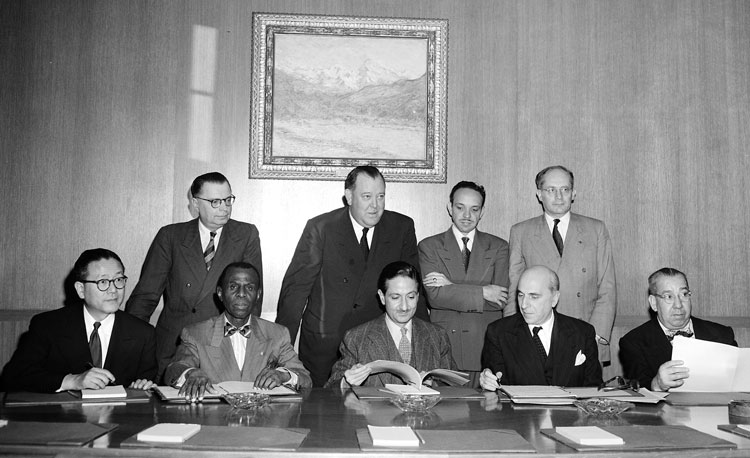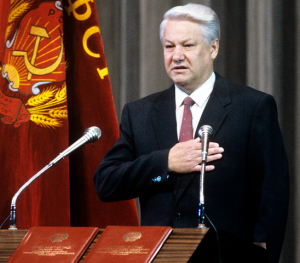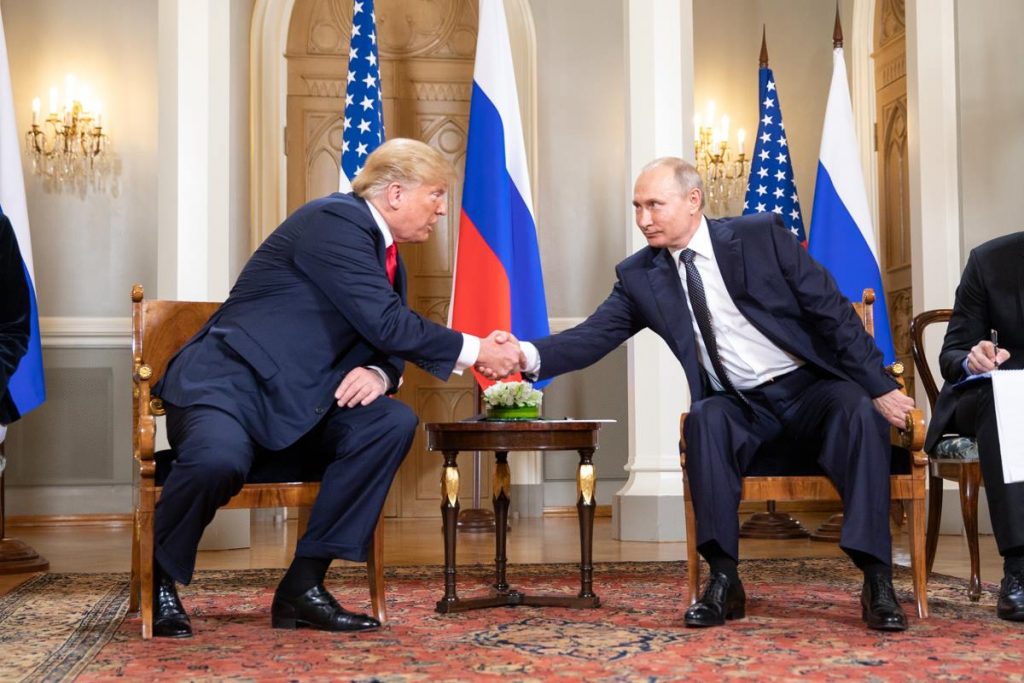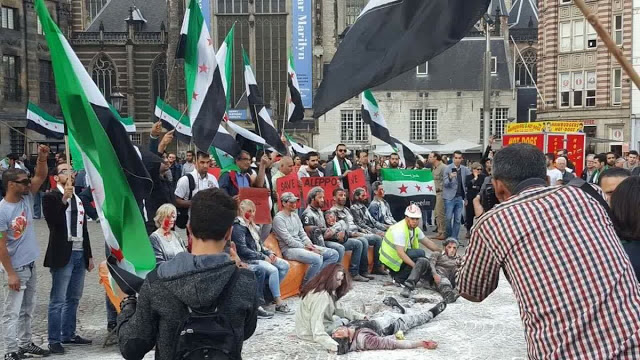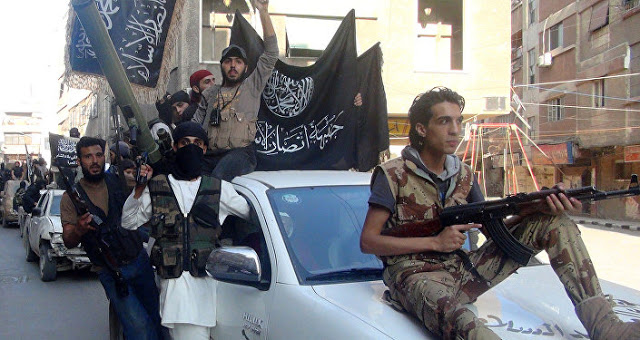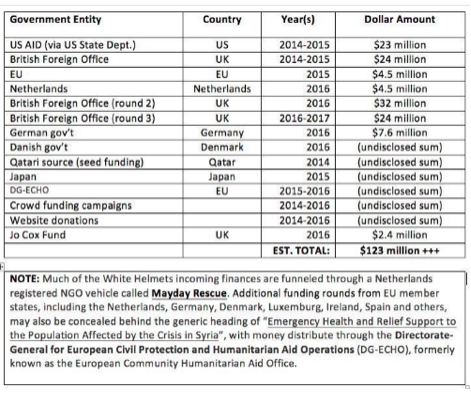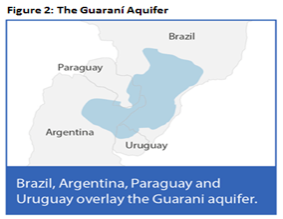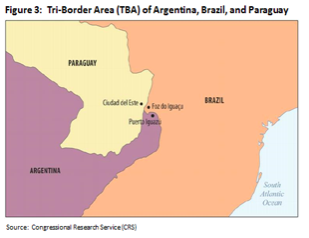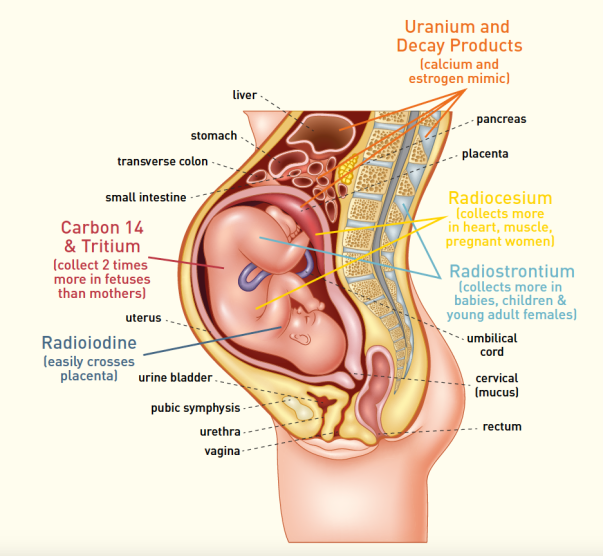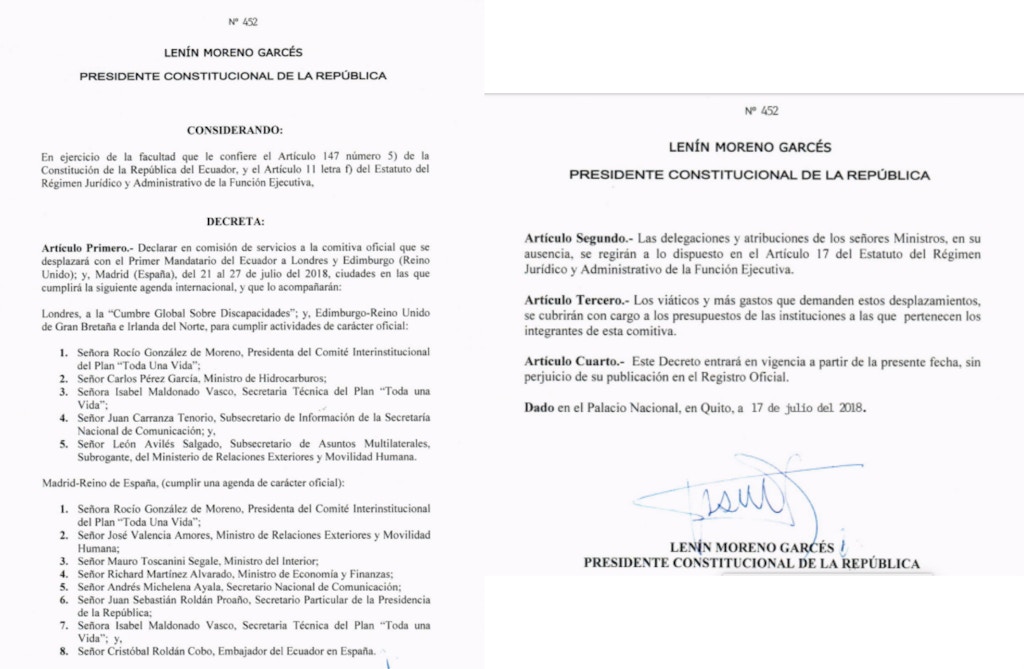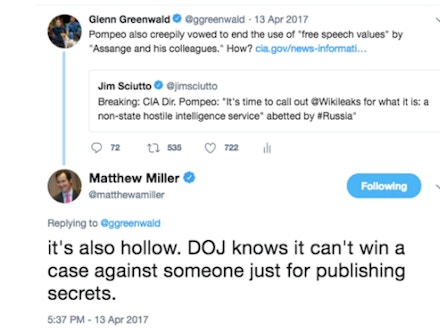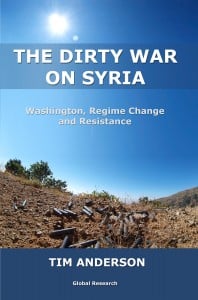Mexico’s New Populist President Considers Foreign Pipeline Plans Despite Indigenous Protests
July 26th, 2018 by Steve Horn
Note to readers: please click the share buttons above
Andrés Manuel López Obrador looked out at the crowd of reporters at a Mexico City Hilton Hotel the night of July 1. It was a moment that he had waited years for: his victory speech for the Mexican presidency.
To win in his third presidential campaign, López Obrador, a left-wing populist whose roots are in the oil-producing state of Tabasco, had to calm business leaders, who warned that foreign investment would flee the country if he took office. However, the candidate who once said he would overturn Mexico’s 2013 reforms privatizing its energy sector — which opened the oil and gas industry to foreign investment and created a subsequent pipeline boom — struck a different tone on election night.
“The contracts in the energy sector with private companies will be reviewed to prevent corruption and illegal acts,” he said, firmly, in his slow, steady style.
But, he assured the crowd, he will respect investors.
Just minutes later, López Obrador was headed to the Zocalo, Mexico City’s most important public plaza, to address 80,000 people gathered to celebrate his victory. The second speech was rousing, replete with promises to represent the most vulnerable Mexicans.
“We are going to fulfill all of our commitments. I will not fail you,” he assured the crowd. “You will not be deceived.”
As a renegade politician turned President-Elect, López Obrador has many promises to keep. Communities impacted by oil and gas pipeline expansions, a result of the energy reforms, wonder which López Obrador will prevail: the one who called for a reversal of energy privatization reforms, or an appeaser who seeks to build trust with the business elite.
Many signs, to date, point to the latter.
And yet, in the months and years preceding the election, a pipeline opposition movement has arisen in Mexico, communicating its intentions to stand in the way of pipeline development, even in light of the election of López Obrador. That movement is led by indigenous peoples.
A Growing Opposition
Outgoing president Enrique Peña Nieto signed the energy reforms in late 2013, opening the previously state-owned oil and gas sector monopolized by the company Pemex (Petróleos Mexicanos) to direct foreign investment. The privatization effort was pushed by the U.S. Department of State, as first reported by DeSmog, under then-Secretary of State Hillary Clinton.
With little popular fanfare, the floodgates are now open for international business, and since 2013, foreign companies have invested heavily in pipeline infrastructure set to transport oil and natural gas predominantly obtained via hydraulic fracturing (“fracking”) in the U.S. across the border into Mexico.
Despite that push to expand Mexico’s pipeline grid and oil and gas market, communities and indigenous groups have managed to halt construction on at least four pipelines owned by TransCanada and Sempra Energy in Mexico. Their tactics range from refusing to issue permits to taking legal and regulatory system action, and in some cases, actually physically blocking or sabotaging construction itself. TransCanada is best known for its ownership of the Keystone Pipeline System, including the proposed Keystone XL pipeline, slated to run from Alberta, Canada, to Nebraska.
Raymundo Espinoza Hernández, a lawyer representing communities impacted by a TransCanada pipeline, told DeSmog in an interview that
“July 1 will come and go, but we will continue organizing.”
The communities Espinosa Hernández represents have sent a clear message:
They will continue to protest TransCanada’s Tula-Tuxpan pipeline even with López Obrador in office. Tula-Tuxpan, which connects to the cross-border and underwater Sur de Texas-Tuxpan pipeline, is at the center of a growing movement of indigenous resistance against oil and gas pipelines in the country.
TransCanada has four pipelines already in operation in Mexico. Another three pipelines are slated to run along the Gulf Coast and into central Mexico from Brownsville, Texas, to Tuxpan, Veracruz; from Tuxpan to Tula, Hidalgo; and Tula to Villa de Reyes, San Luis Potosí. However, these three have all been delayed due to local opposition.
A Sempra pipeline that crosses from Arizona into Sonora is also stalled, after a Yaqui indigenous community blockaded the construction site in the Mexican state. In many of these cases, indigenous communities are arguing either they were not properly consulted on the pipelines, as required under the new privatization law, or that companies used intimidation tactics to elicit support.
Andrés Manuel López Obrador at a rally for the swearing of Enrique Peña Nieto in December 2012. Credit: ProtoplasmaKid, Wikimedia Commons, CC–BY–SA 4.0
According to the Mexican newspaper El Financiero, construction delays have cost TransCanada $300 million to date. The same report says that TransCanada’s total investment in Mexico tops $5 billion.
York University researcher Anna Zalik told DeSmog in an interview that TransCanada increased its investments in Mexico due to the high costs of doing business in the U.S. and Canada, after years of sustained resistance to pipelines including Keystone XL. One Bloomberg article reported that “Mexico opened its arms” to TransCanada investment following those setbacks, a trend DeSmog reported at the time as well.
TransCanada won the contract for the Tula-Tuxpan pipeline in November 2015, just after then-President Barack Obama denied TransCanada’s attempt to build Keystone XL. President Donald Trump has since undone Obama’s rejection, approving that pipeline via a presidential permit in March 2017.
Lack of Consultation
The Tula-Tuxpan pipeline route covers 177 miles, affecting 459 communities in four Mexican states: Veracruz, Hidalgo, Puebla, and the State of Mexico. However, TransCanada only held consultations with 15 communities along the route. Most of the communities are indigenous, from the Nahua, Totonaca, and Otomí tribes.
Oliveria Montes Lazcano is the spokesperson of the Regional Council of Indigenous Peoples in Defense of the Territory of Puebla and Hidalgo, an umbrella organization for the communities in resistance to the Tula-Tuxpan pipeline. DeSmog spoke with her and the lawyer representing the council, Raymundo Espinosa Hernández, who serves as a legal representative for the National Assembly of People Affected by the Environment, an organization that brings together rural and urban communities against the “degradation, destruction, and dispossession” of natural resources, according to its mission statement.
“The consultation was not ‘prior,’ ‘free,’ or ‘informed,” Montes Lazcano told DeSmog, referring to the international human rights standard of free, prior, and informed consultation (FPIC) with indigenous peoples over policies and projects affecting them. “Many people didn’t know it was a consultation. The company came in offering handouts.”
Members of the Regional Council have brought five legal cases against TransCanada and the Mexican federal agencies that approved the pipeline, including the Federal Electricity Commission (CFE) and Energy Secretariat (SENER). The first case argues that they did not properly consult all communities that would be impacted by the pipeline.
The council’s legal strategy goes beyond consultation, however, disputing the pipeline’s proximity to sacred sites and water sources, and calling out the lack of employment for local people in its construction. Furthermore, they say that the project’s environmental and social impact statements lacked key information about the area’s ecology and culture.
In short, TransCanada has in many ways replicated the practices it has used to push through pipelines in the U.S. and Canada, this time in Mexico. If it sounds similar to the Standing Rock Sioux Tribe’s fight against the Dakota Access pipeline in North Dakota, it should. That’s because indigenous peoples’ opposition to that project also centered around what they felt fell short of consultation requirements under U.S. federal law.
“Consultation legalizes dispossession,” said Espinosa Hernández, explaining that the consultation process can legitimize problematic development projects, as previously reported by DeSmog. “But disputing the consultation process buys us time and allows us to organize more effectively [while waiting for the court decision].”
In June, the Regional Council filed a complaint with the United Nations Special Rapporteur for Indigenous Peoples, taking issue with TransCanada’s conduct toward indigenous peoples in the area.
The complaint alleges that TransCanada has used “blackmail, deception, and violence to impose a private business such as the Tuxpan-Tula gas pipeline, using public resources and attacking the national interests and the rights of our peoples,” while also allegedly partaking in the “falsification of the signatures of some indigenous people” to give the apperance of public support for its pipeline project.
More than half of the pipeline has been constructed, but since December 2017, construction was halted at two points along its route, Cuautepec and San Pablito, due to legal rulings. Espinosa Hernández says it will take years for the council’s five legal cases involving TransCanada to be decided. He says this is a good thing, because the company loses money every month that construction is stalled.
Montes Lazcano explains that the company tried to co-opt the authorities in municipalities through which the pipeline passes. However, the Regional Council is re-invigorating indigenous forms of governance. In many parts of Mexico, indigenous communities govern themselves through systems of “uses and customs,” which often exist alongside political parties.
While the communities partake in indigenous forms of governance, they did follow the 2018 political campaign closely. In addition to López Obrador’s victory, his left-leaning Morena party, which he formed after splitting from the Revolutionary Democratic Party (PRD) following his second, failed presidential bid in 2012, made strides in the states the pipeline passes through. The Morena candidate for governor won in Veracruz. In Puebla, the right-wing candidate from the PAN, the wife of the outgoing governor, was named the winner in a close race against Morena. However, Morena is seeking to have the results annulled due to alleged fraud.*
Montes Lazcano says that organizing the Regional Council has empowered people to think critically about the political situation.
“People now have the volition to speak their mind,” she said. “They are building their social consciousness.”
These local battles over pipelines have already become a major headache for the oil and gas industry. Bloomberg reported in the summer of 2017 that a “glut” of natural gas has swelled on the U.S.-Mexico border due to delays in pipeline construction in Mexico.
Wary Investors Ease Skepticism
Despite that opposition, López Obrador has stated that he will not cancel already-existing contracts, nor will he nix the privatization policy at-large. His top adviser recently told Bloomberg that privatization is here to stay and that López Obrador will instead focus on rooting out corrupt energy deal contracts.
“If you read the balance of what he’s saying you still sense a commitment to growing the energy sector,” Tony Garza, former U.S. ambassador to Mexico under President George W. Bush and current attorney for the firm White and Case in Mexico City, recently told the Houston Chronicle. “A lot of this is TBD. Now it’s time to take a deep breath and say, ‘What is this transition going to look like?’”
Indeed, some things have already been determined.
For example, López Obrador has announced a plan to renovate and retool Mexico’s six existing oil and gas refineries, while pledging to build two more in the Mexican states of Campeche and Tabasco. Another indication that the new presidency will maintain friendly relations with the oil and gas industry is none other than López Obrador’s choice for Energy Secretary, Rocío Nahle García, a former petrochemical engineer for Pemex.
That much is clear.
What is less clear is whether López Obrador will support a re-nationalization of the oil and gas industry, or encourage more foreign investment. So far, his team openly stated that privatization will proceed and auctions for oil and gas acreage will continue. In fact, Reuters reported on July 1 that López Obrador told Wall Street investors exactly this during a trip he took to New York City.
TransCanada Hires Lobbyists

While the populist lore of López Obrador lives on in Mexico and beyond in the aftermath of his election, York University’s Zalik believes that the shift in energy policy towards foreign ownership has already stamped a dependency on foreign fuel sources in Mexico, particularly for natural gas. She compares the energy reforms to NAFTA, which created a dependency on imported corn, and decreased food sovereignty, in Mexico.
“The money invested creates an imperative that will keep this model in place,” she explained. “If you’re trying to support energy sovereignty and renewable sources, you don’t want an expensive infrastructure built that’s in competition with that.”
As if on cue, Sempra Energy announced on July 9 that it will invest $150 million to build a fuel terminal in southern Mexico to store petrochemical products via its subsidiary, iEnova.
In a July 10 article reacting to López Obrador’s election, the corporate law firm Holland & Knight laid out what comes next from a corporate point of view. In a word: lobbying.
“A large and intense wave of lobbying and reactions to the country’s energy future is expected in the upcoming months,” wrote the firm, adding that “because in order to carry out this type of investment, long-term certainty is required.”
Also taking its cue, TransCanada posted three job openings on July 10 in the area of lobbying. Those employees would work out of its office in Mexico City.
Though López Obrador’s plans for energy infrastructure have yet to fully materialize, the lawyer Espinosa Hernández says there are reasons to be hopeful. That’s despite what looks like a more amicable approach toward the oil and gas industry for the President-Elect going forward.
“[López Obrador winning] isn’t a revolution, but it is a different scenario where social movements have space to breathe,” he told DeSmog. “[He] can have a better attitude towards communities that are defending their territory.”
The new administration has announced it will roll out its official energy policy beginning in September, which will likely shape the contours of the fight over Mexico’s energy reform for both proponents and opponents for months and years to come.



 Can you
Can you 


